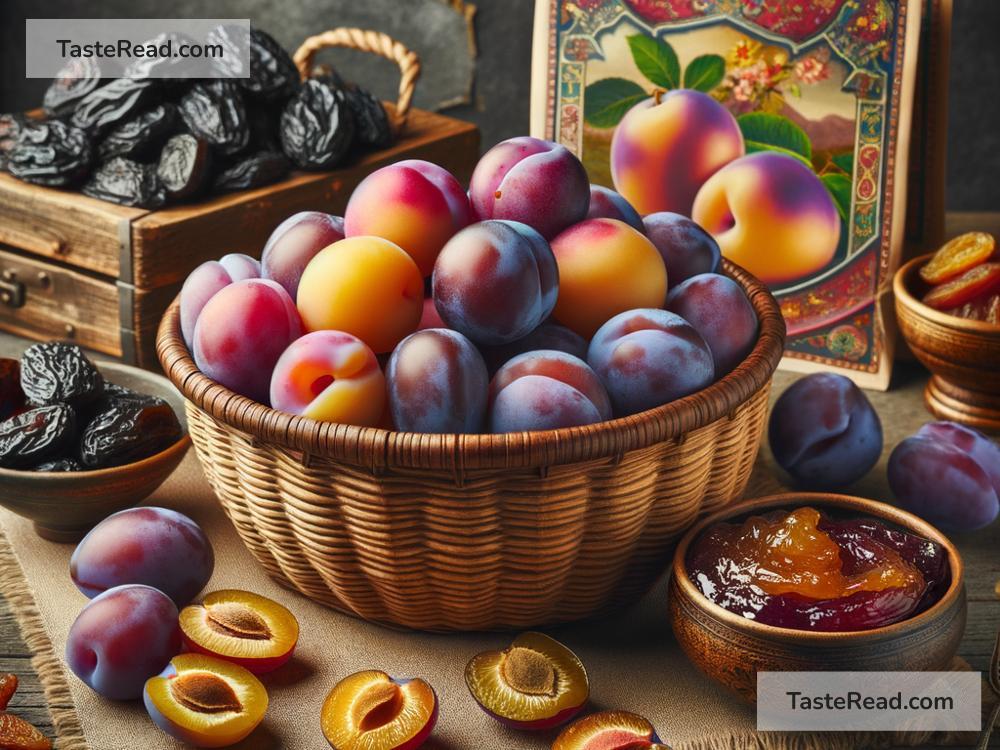How Plums Became a Popular Snack Worldwide
Plums are small, sweet, and juicy fruits that have captured the hearts of people all over the world. While they were originally grown in specific regions, today plums have become one of the most popular snacks globally. Whether fresh, dried, or turned into jams, plums stand out as a delicious and versatile treat loved by many. But how did this humble fruit rise to international fame? Let’s explore the journey of plums from a local delicacy to a worldwide favorite.
The History of Plums
Plums have a long and fascinating history. It is believed that plums originated in ancient China over 2,000 years ago, where they were first cultivated and enjoyed for their sweet flavor and health benefits. They later spread to other parts of Asia, such as Japan and Korea, and were eventually introduced to the Middle East and Europe through trade.
In Europe, plums became particularly popular during Roman times. The Romans loved plums for their sweetness and nutritional value, and they began growing them across their empire. Plums were often preserved by drying, which led to the creation of prunes—a long-lasting version of the fruit that could be enjoyed year-round. By the Middle Ages, plums had become a staple ingredient in European cooking.
In the Americas, plums arrived with European settlers who brought seeds and plants to grow the fruit in new lands. Over time, plums adapted to the different climates and soil conditions, allowing the fruit to thrive in diverse regions worldwide.
The Rise of Plums as a Global Snack
A major reason plums became so popular is their versatility. This small fruit can be eaten fresh, dried, or cooked, and it’s used in everything from snacks to desserts to savory dishes. Prunes, the dried form of plums, are especially well-loved for their sweet flavor and chewy texture. They also stand out as a convenient snack because they don’t spoil easily, making them perfect for travel or long-term storage.
Plums are also widely appreciated for their nutritional benefits. They are rich in vitamins, minerals, and antioxidants that can support digestion, boost immunity, and improve overall health. In particular, prunes have become associated with digestive health due to their high fiber content. This health appeal has helped plums gain recognition among health-focused individuals and families worldwide.
In addition to being healthy, plums are an affordable fruit that can be grown in many parts of the world. This accessibility has allowed countries to cultivate plums locally, leading to greater availability and lower costs for consumers. Whether in bustling cities or rural areas, plums are a snack that almost anyone can enjoy.
Global Cultivation and Varieties of Plums
Today, plums are grown in many countries across various continents. China remains the largest producer of plums in the world, but other major producers include the United States, India, Turkey, Serbia, and Romania. Thanks to modern farming techniques, plums are now grown year-round in some regions, ensuring that people can enjoy the fruit regardless of the season.
One reason plums have gained global popularity is their wide variety of types. With over 2,000 different species, there’s a plum for every taste preference. Some plums are sweet, while others are tart. Certain types have smooth skin, and others are more processed, such as prunes. Popular varieties include Japanese plums (like the red and yellow “Santa Rosa” or “Elephant Heart”) and European plums (such as “Damson” and “Mirabelle”).
Global trade has also made it easier for people to try different types of plums from other regions. For example, Japanese plums are now commonly grown in California and exported to many countries. Similarly, dried prunes from Europe are shipped worldwide and often marketed as a healthy snack.
Cultural Significance of Plums
Plums have also cemented themselves as a cultural symbol in many countries. In China, plums represent perseverance and hope due to their ability to bloom in winter. They’re often depicted in art and poetry. Similarly, in Japan, plum blossoms are celebrated during “ume matsuri,” or plum festivals, where people gather to appreciate the beauty of plum trees and enjoy cultural foods made with plums.
Across the Middle East, plums are used in traditional dishes like stews, while in Europe they’re featured in desserts and liquors. In the United States, prunes are a common snack for kids and adults alike, and plum jam is a staple in many households.
A Fruit for Every Occasion
Plums have grown far beyond their origins to become a global phenomenon. Their sweet taste, health benefits, and adaptability have made them a favorite snack, and their rich history and cultural significance only add to their appeal. Whether eaten fresh from the tree, dried as prunes, or baked into pies, plums remain a fruit that connects people from all walks of life.
So next time you reach for a juicy plum or a handful of prunes, consider the journey this small fruit has taken to become one of the world’s most popular snacks. Plums remind us that simple, natural foods can bring joy and flavor to people everywhere—no matter where they live or how they enjoy their fruit!


